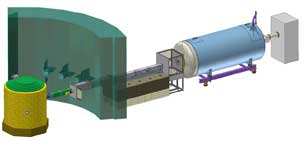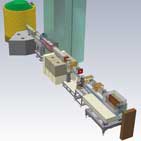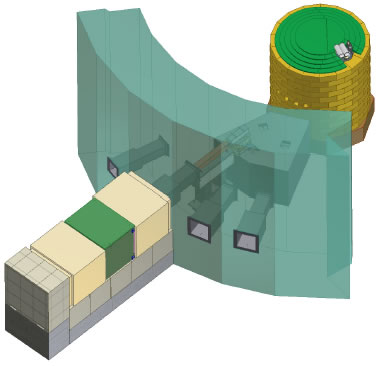The instrumentation suite at LENS reflects the facility's commitment to the study of large scales structures and innovation in neutron instrumentation. Typical neutron fluxes at the sample position are greater than 104 n/cm2/s so the facility concentrates on measurements of structure rather than dynamics in condensed matter systems. Novel aspects of the source that are exploited by these instruments include the cold neutron spectrum and the variable source frequency. The initial suite of instruments will include:
Instrumentation at LENS
Small Angle Neutron Scattering (SANS)
The SANS instrument occupies the first of 4 beam lines available at LENS. It utilizes pinhole collimation and covers a Q-range of 0.008 - 0.5 Å-1 that will allow inhomogeneities on a length scale of 20 - 500 Å to be probed.
View more information about the Small Angle Neutron Scattering (SANS)
Spin Echo Scattering Angle Measurement (SESAME)
One of the beam lines at LENS is devoted to the development of a novel instrument that employs neutron spin-echo techniques to encode scattering angles. This technique greatly increases the efficiency with which neutrons are used, since it can provide very precise angular resolution even in the absence of a highly collimated beam. The technique requires a polarized beam of neutrons and various technologies are being explored to produce the spin-flips and precessions needed.
View more information about the Spin Echo Scattering Angle Measurement (SESAME)
Moderator Imaging Station (MIS)
The Moderator Imaging Station (MIS) is a very simple instrument which views the moderator at a small angle through a horizontal boron-nitride slit. This instrument was designed for studies of the so-called convoluted moderator, in which there is a significant angular variation in the emitted intensity, and the slit allows simultaneous collection data over a roughly 3 deg. angular range. A small pinhole can also be used to image the intensity from various parts of a test moderator. To date, moderator experiments on MIS have been performed with a detector brought in from the SNS for each experiment.
View more information about the Moderator Imaging Station (MIS)


